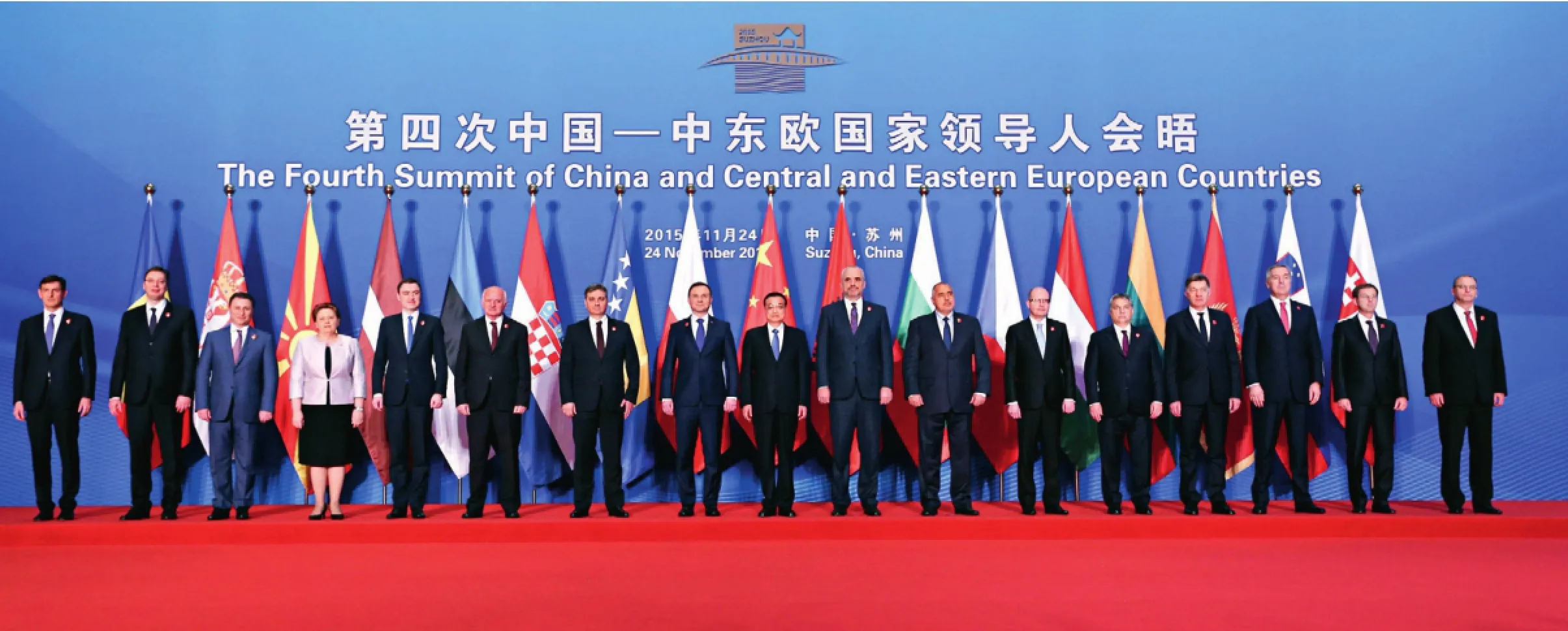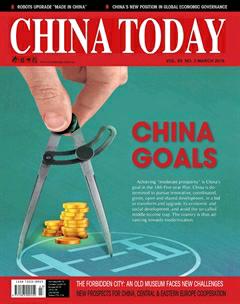New Prospects for China, Central & Eastern Europe Cooperation
By LIN MINWANG
New Prospects for China, Central & Eastern Europe Cooperation
By LIN MINWANG
CHINA’S diplomatic ties with Europe witnessed remarkable achievements in 2015. During Chinese President Xi Jinping’s visit to the U.K. last October the two sides agreed to build a global comprehensive strategic partnership in the 21st century, so ushering in a “golden era” of China-Britain relations. Chinese Premier Li Keqiang visited France and the European Union headquarters last June, and co-chaired with President of the European Council Donald Tusk and European Commission President Jean-Claude Juncker the first China-EU leaders’ meeting since the change of EU leadership. China and Germany moreover held their first highlevel financial dialogue and first diplomatic and security strategic dialogue. The Fourth Summit of China and Central and Eastern European Countries (CEECs) took place after German Chancellor Angela Merkel and French President Francois Hollande’s official visits to China. The comprehensive development of Sino-European relations thus reached a new high.

The Fourth Summit of China and Central and Eastern European Countries opens in Suzhou, China, on November 24, 2015.
However, the mechanism and mode of cooperation between China and CEECs are distinct from those between China and major powers like the U.K., France, and Germany.
Under the Framework of China-EU Relations
It is reasonable that China-CEE cooperation should follow the framework of China-EU relations. On one hand, 11 of the 16 CEECs have joined the EU. A platform for Europe’s regional integration, the EU plays a dominant role in the region’s primary cooperation rules. China, therefore, is unlikely to deviate from this framework in the conduct of China-CEE cooperation.
On the other hand, China follows the framework of China-EU relations in efforts to avoid opposition from big EU powers amid the political realities of the international community. Major power competition within the sphere of influence has always been a basic logic of real international politics. Incorporating China-CEE cooperation into the framework of China-EU relations signifies China’s acknowledgment of the leading status of big countries in Europe, and highlights the country’s willingness to cooperate.
Establish a Pragmatic Cooperation Mechanism
China and the CEECs set up in 2012 the 16+1 pragmatic cooperation mechanism. It acts as an engine for advanced cooperation through diverse platforms, including the Economic and Trade Forum, Secretariat for Cooperation, National Coordinators’ Meeting, Ministerial Conference on Promoting Trade and Economic Cooperation, and Local Leaders’ Meeting.
Geared to pragmatic cooperation, the 16+1 mechanism projects concrete measures and programs relating to economy, trade, investment, infrastructure, finance, tourism, education, agriculture, culture, and local cooperation. Most of the measures put forward in the Bucharest Guidelines and Belgrade Guidelines have been implemented. The Suzhou Guidelines, jointly issued at the 2015 summit, list prospective projects in the coming years.
Deepen Bilateral Cooperation
In addition to multilateral collaboration, bilateral cooperation between China and the CEECs is also deepening. Since the Belt and Road Initiative was proposed in 2013, China and the CEECs have agreed on cooperation that involves ports in the Adriatic, Baltic and Black Seas to boost construction of a China-Europe land-sea express line – an upgraded extension of the railway running through Belgrade and Budapest; also to jointly explore a new framework that promotes connectivity.
Among the 16 CEE countries, Poland, the Czech Republic, Hungary, Slovakia, and Romania are China’s biggest trading partners, accounting for almost 80 percent of its total trade volume with the region. Serbia is the first non-EU country in Central and Eastern Europe to establish a strategic partnership with China. Key cooperation projects are carried out with these major countries with the aim of stimulating China’s trading ties with the region as a whole.
What’s more, China has signed an MOU to promote the Belt and Road Initiative with six CEECs, including Poland, the Czech Republic, and Hungary.
New Beginning, New Domains, New Vision
Last November, the Fourth Summit of China and Central and Eastern European Countries, themed “new beginning, new domains and new vision,” took place in Suzhou. Chinese Premier Li Keqiang attended the “16+1”Leaders’ Roundtable Meeting and addressed the opening ceremony of the Fifth China-CEEC Economic and Trade Forum. He also met with each of the CEEC leaders present at the meeting. President Xi Jinping later held a group meeting with CEEC leaders in Beijing.
“New beginning” signified China’s first hosting of the China-CEEC leaders’ meeting, wherein “16+1 cooperation” reached the important stage of inheriting the past and ushering in the future. “New domains” referred to the meeting’s aim to raise new measures, so creating fresh highlights and expanding new fields. “New vision”reflected the meeting’s focus on top-level design to chart development for the coming five years.
The meeting achieved all of these aims. CEEC leaders welcomed the 1+6 cooperation framework that Premier Li Keqiang proposed. Moreover, the Medium-term Plan for Cooperation between China and CEECs and the Suzhou Guidelines, jointly issued at the close of the summit, fulfilled the objectives of opening up new areas while planning for future development.
As the Premier observed, 16+1 cooperation not only reflects the principles of equality, openness and inclusiveness, but has also synergized the respective development strategies in a way that is both flexible and appropriate to national conditions. It has fully accommodated the EU’s relevant concerns and moved in parallel with the greater interests of China-EU cooperation, so signifying commitment to achieving all-win outcomes for China, CEECs and the EU. It may be said that China and the CEECs have explored a new model of practical cooperation among countries in different regions of the world and with different political systems.
Promising Prospects
The past few years have witnessed the building of a solid foundation for China-CEE cooperation through pragmatic development. The 2014 trade volume between China and the CEECs was US $60.2 billion, compared with US $43.9 billion in 2010.
Li Keqiang has stressed the need for China-CEE cooperation to get on the fast track and embrace more opportunities in the future. As implementation of the Belt and Road Initiative gets into full swing, China is calling for more cooperation on international production capacity. Between them, China and the CEECs have great cooperation potential in such fields as transport, energy and infrastructure. Meanwhile, CEECs are undergoing adjustment of their economic structures after the European debt crisis, and their infrastructures also need to be upgraded. The complementarity in supply and demand between China and CEECs in such sectors lays a solid and reciprocal foundation for further cooperation.
What’s more, trade volume between China and CEECs equals just one tenth of that between China and EU. There is hence great potential for China-CEE cooperation. A favorable cooperation mechanism will add enormous impetus to cooperation between the 17 parties as a whole. Through promoted facilitation of two-way investment and trade, based on the opportunities that the Belt and Road Initiative generate, investment and trade is expected to become one of the 16+1 cooperation’s most vigorous growth points.C
LIN MINWANG is an associate professor at the Institute of International Relations of China Foreign Affairs University, and a guest research fellow with the Chongyang Institute for Financial Studies at Renmin University of China.

